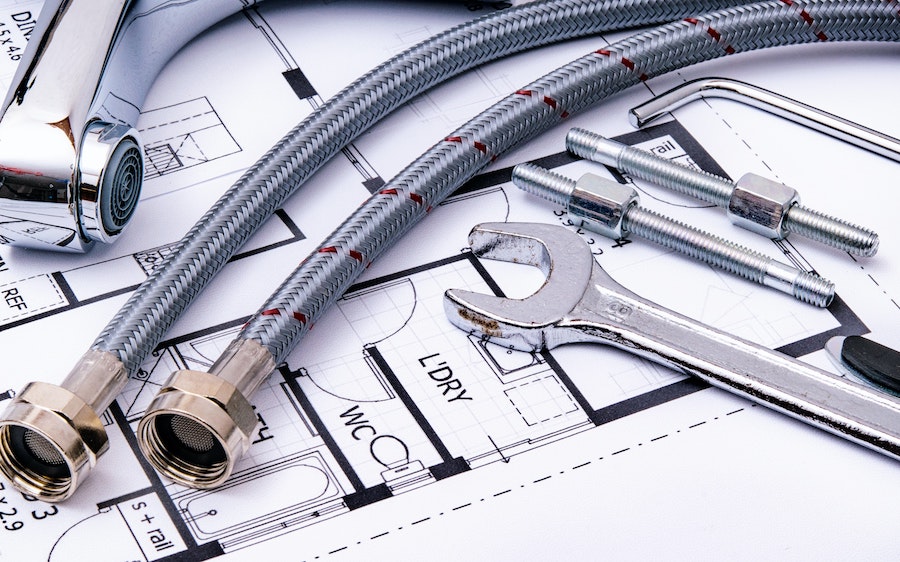What Size Washer For a Kitchen Tap?

Choosing the correct size washer for your kitchen tap is crucial for preventing leaks and ensuring a smooth operation.
However, determining the right size can sometimes feel like a bit of a guessing game.
To help you, here's a quick guide on the topic.
The standard size for kitchen tap washers in the UK is usually either ½ inch (12.7 mm) or ¾ inch (19.05 mm).
These are generally referred to as '½ inch washers' and '¾ inch washers', respectively.
However, the size you'll need for your tap can vary due to several factors:
- Tap Type: Different types of taps require different washer sizes. Traditional taps usually have a larger washer size (¾ inch) while mixer taps often require a smaller size (½ inch).
- Manufacturer Specifications: Different manufacturers may have unique specifications and require different washer sizes, even for the same type of tap.
- Tap Age: Older taps often use larger washers, while newer models might use smaller ones.
It's always a good idea to check the manufacturer's specifications if possible, or better yet, take the old washer to the hardware shop when buying a new one.
If you're unsure, it's best to call a professional plumber to avoid any potential issues.
Remember, while it might seem like a minor component, the washer plays a vital role in ensuring your kitchen tap operates correctly and leak-free.
Click here to see our complete range of kitchen 1810 sinks...
How to Tell What Size Washer You Need for a Kitchen Tap?
Telling what size washer you need for your kitchen tap may initially appear complex, but with a few easy steps, you can figure it out:
- Remove the Existing Washer: First, turn off the water supply to avoid a minor flood. Then, you'll need to dismantle the tap. This usually involves removing the handle and unscrewing the valve from the tap base. Once you've done this, you should be able to access and remove the washer.
- Measure the Washer: Measure the diameter of the old washer using a ruler or tape measure. Washers are typically measured in inches, and the standard sizes for kitchen taps in the UK are generally ½ inch (12.7mm) or ¾ inch (19.05mm).
- Check the Tap Seat: The tap seat is where the washer sits when the tap is off. Check the size of the tap seat because the washer will need to match this.
- Consider the Tap Type and Age: Remember that the type and age of your tap can also influence the size of washer you need. Traditional taps and older taps often use larger washers, while mixer taps and newer models might use smaller ones.
If you're uncertain or uncomfortable doing these steps yourself, you can always enlist the help of a professional plumber.
They'll be able to quickly determine the correct washer size for your tap and even replace it for you if necessary.
Lastly, it's worth mentioning that it's always a good idea to take your old washer with you when purchasing a new one, just to make sure you've got the right size.
It might be a small piece of your kitchen tap, but getting the right washer is crucial for a leak-free tap!
(Check out this page to see our kitchen sinks online for sale).
How to Change a Washer on a Kitchen Tap
Changing the washer on your kitchen tap is a task that might feel a bit daunting at first, but with the right steps and a bit of patience, it's a DIY task that's definitely achievable.
Here's a step-by-step guide on how to do it:
What You'll Need:
- Adjustable spanner or wrench.
- Screwdriver (flat-head or cross-head depending on your tap).
- Replacement washer.
- Plumber's grease (optional).
Steps to Follow:
- Turn off Your Water Supply: Before you start, you'll need to turn off the water supply to your kitchen tap. This is usually done via the isolator valves located beneath the sink.
- Remove the Tap Handle: The next step is to remove the tap handle. This usually involves removing a screw located either on top of the handle under a decorative cap, or at the back of the handle.
- Unscrew the Valve: Once the handle is off, you should see a brass spindle or valve. Using your adjustable spanner or wrench, unscrew this. Be careful to protect the finish of the tap with a cloth while doing this.
- Remove the Old Washer: You should now see the old washer at the bottom of the spindle or valve. It might be held in place by a small nut or a screw. Remove this and you should be able to take off the old washer.
- Fit the New Washer: Now take your new washer and place it on the spindle or valve where the old one was. If necessary, use plumber's grease to help it fit snugly. Then, secure it in place with the nut or screw that you removed earlier.
- Reassemble the Tap: Once the new washer is in place, reassemble the tap by screwing the spindle or valve back into the tap base, and then replacing the handle.
- Test the Tap: Finally, turn your water supply back on and test the tap. It should now function without any drips.
If the tap is still dripping, you might need to check the seating of the washer or consider if there's a more complex issue that might require a professional plumber.
Remember, if you're at all unsure about any of these steps, it's best to call in a professional.
And always make sure to have the right size washer on hand before you begin the process.
(Click here to see our complete range of kitchen sink taps for sale online).
Final Notes On What Size Washer You Need for a Kitchen Tap?
To sum up, the correct size of the washer for your kitchen tap plays a crucial role in ensuring the smooth and leak-free operation of your tap.
The standard washer sizes in the UK are generally either ½ inch (12.7mm) or ¾ inch (19.05mm), but the size you need can vary depending on the type, age, and manufacturer of your tap.
To identify what size you need, remove the existing washer and measure it. It's also wise to consider the type and age of your tap and to check the size of the tap seat.
Changing a washer can be a fairly straightforward task if you're comfortable with some basic DIY.
However, don't hesitate to call in a professional if you're unsure. It involves turning off the water supply, disassembling the tap to remove the old washer, fitting the new washer, and then reassembling the tap.
Remember to always have the correct washer on hand before you begin the process.
With a bit of patience and the right steps, you can ensure the smooth and efficient running of your kitchen tap.

